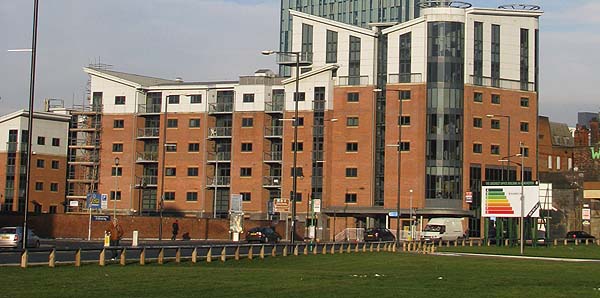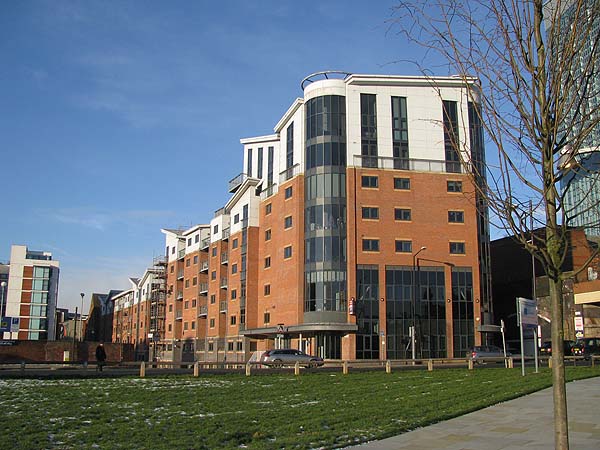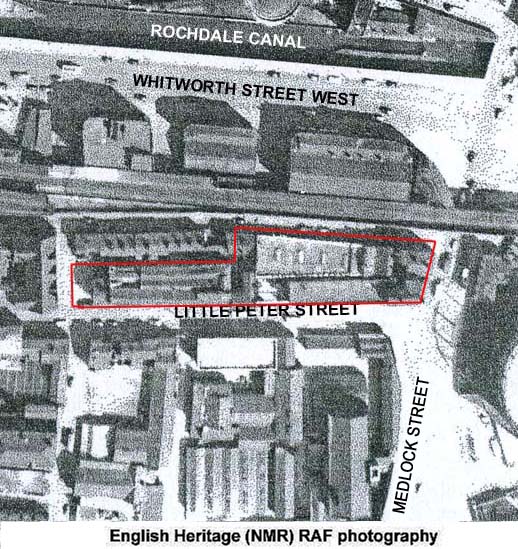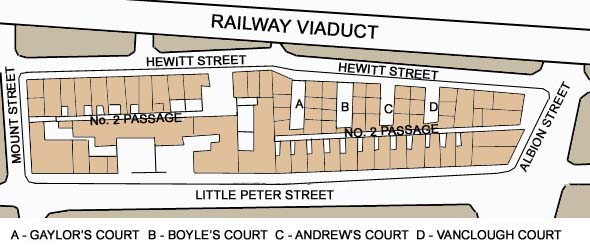|
The
Ropeworks Apartments
 The Ropeworks
apartment complex occupies a site beside the railway
viaduct that carries trains from Deansgate Station to
Oxford Road Station. It faces onto Little Peter
Street between Albion Street and Bugle Street.
Websites offering apartments to rent claim that the
complex is built on the site of Manchester's famous
old MG garage.
This six-storey building has a distinctive gull-wing roof and circular turrets. The estate agents say that, "The Ropeworks is a stylish two-block development of 300 one and two bedroom apartments and penthouse flats."..... "The majority of apartments have full-height windows and Juliet balconies and the curved units on the edge of the developments have interesting room shapes."   Prior to the recent
redevelopment, the area along Albion Street and
Medlock Street, beyond the railway viaduct, used to be
mostly industrial and commercial. The Gaythorne
Gasworks dominated the area but it was surrounded by
factories, offices and warehouses. The site of
the Ropeworks Apartments is show within the red line
in the image below.
 Among the businesses trading on Little Peter Street in 1927 were: P.
Bowler & Co, electroplaters - number 35
Brailey & Wiseman - electroplaters Dobb Brothers - engineers - number 35 Donohoe & Croskell - electrical accessories - number 20 S. N. Dunn & Son - printer - number 37 Frank & B. Dunn - underclothing manufacturers - number 35 E. Fenwick & Co - shirt manufacturer - number 35 John Kerr & Co - fire extinguisher manufacturer - number 22 Alan Leslie - veterinary surgeon The map below shows
the site in 1928. The British Driver
Harris Company manufactured cable and electrical wire.
 If you click on the two links below you can glimpse the site in 1973. Little
Peter Street 1
Little
Peter Street 2
The transformation
of a former industrial / commercial district into
one dominated by residental property is quite
appropriate. If you refer back to the middle of
the 19th Century, the area was also residential in
nature. The map below based on one from 1845
shows that the whole block was made up of
dwellings, many of them apparently back-to-backs.
 |